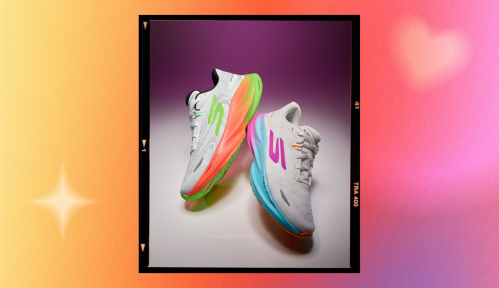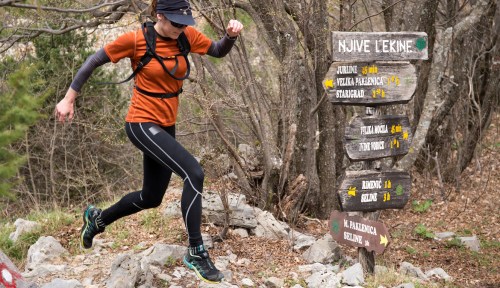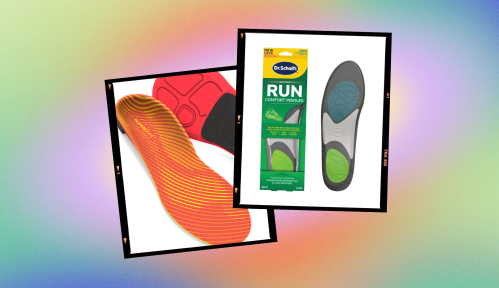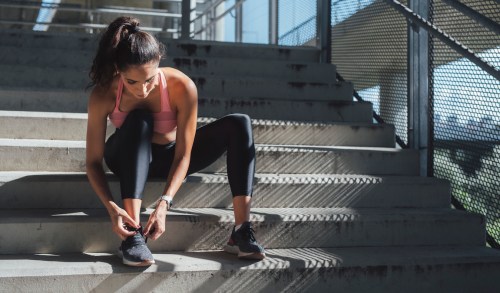Our editors independently select these products. Making a purchase through our links may earn Well+Good a commission
Meet the Podiatrist-Approved ‘Pain-Relieving’ Shoes That Noticeably Improved My Lower Back and Knee Pain
Find out what this writer discovered when she tested out Therafit shoes for three weeks on all her walks and workouts.
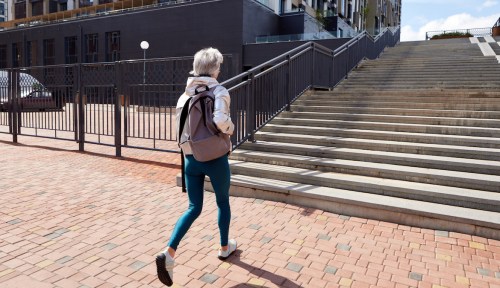
Staying active is a high priority for me—especially now that I’ve reached middle age—so I work out three or four times a week, and walk three times a day. (My dog insists on the latter.) Yet, although I know exercise is good for my body, it can take a toll on my knees, lower back, and feet, especially since I don’t always walk in appropriate shoes and tend to keep my gym sneakers longer than I should.
So when I heard buzz about Therafit shoes designed to relieve foot, knee, and back pain, and approved by the American Podiatric Medical Association, I wanted to find out more about how they work—and try them out for myself.
Therafit’s line of sneakers, work and casual shoes, sandals, and slippers are all built with a multi-layer design engineered to support, align, and stabilize the feet. According to the company, wearing the shoes reduces excessive motion, overpronation, supination, misalignment, and strain in the feet, which can help alleviate plantar fasciitis, heel and arch pain, tendonitis, runner’s knee, shin splints, back strain, and other painful conditions.
As the company says, “If your feet are happy, your whole body is happy.”
While the multi-layer design is common to all the brand’s shoes, personal comfort is also taken into account through touches like removable EVA orthotic insoles (except in sandals) for those who have custom orthotics, and uppers with adjustable straps or laces to accommodate bunions or other foot irregularities.
But the star of the shoe show is Therafit’s patented Personal Comfort System Adapters, a trio of pin-like rubber adapters that can be added or removed from a shock-absorbing heel wedge to adjust the level of cushioning and impact protection.
“One of the key factors in relieving pain and maximizing comfort is the ability of a shoe to absorb and distribute the impact of each stride,” says Therafit CEO Moises Egozi. “If you require firm support, then keeping all of the inserts in is ideal. If you need a soft heel ideal to take pressure off the foot, take out all of the adapters. If you need semi-rigid support, two adapters are the key.”
Another bonus: Therafit knows that women’s feet are not just smaller versions of men’s feet. “Our women’s shoe molds are designed for a women’s foot, unlike other brands who use a unisex shoe mold,” says Egozi.
What happened after three weeks of wearing Therafit shoes
Because my main concerns are lower back pain and post-workout knee pain (especially after high-impact sessions), I decided to spend three weeks wearing the Sienna Women’s Side Zip Sport Casual Shoe ($150) for all my walks, and the Aria Women’s Training Sneaker ($160) for workouts.
First off, I’ll admit I’ve shied away from wearing shoes with this level of support in the past because they tend to look… orthopedic. But Therafit (thankfully) has quite a few stylish selections, and I especially loved my Siennas in gray leopard print.
I can honestly say both pairs of shoes were among the most comfortable I’ve ever worn. The first time I wore the Arias to the gym, I literally felt like I was walking on air. “Leg day” is normally my least favorite, but the cushioning the shoes gave me during squats, lunges, and wall sits felt so good, I did extra sets.
While the Sienna isn’t quite as cushy—specific details may vary between shoe models, but all have the underlying comfort technology, says Egozi—they were definitely supportive and lessened the impact when my feet hit the pavement compared to what I’m accustomed to with other shoes. Added bonus: The Sienna’s side zippers let me slip them on and off quickly without tying and untying the laces.

Sienna Women's Side Zip Sport Casual Shoe — $150.00
Pros:
- Supportive
- Side zippers let you slip them on and off quickly
- Cute prints
Cons:
- Not quite as cushy as other Therafit models
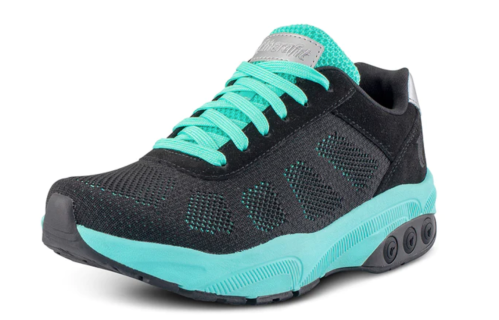
Aria Women's Trainer Sneaker — $160.00
Pros:
- Feels like you’re walking on air
- Eliminated my post-workout knee pain
Cons:
- Less stylish look
My favorite feature was the Personal Comfort System Adapters, which I used to customize the shoes to my energy level and activity. If walking was my main exercise that day, I’d take all the adapters out for a challenging “minimal” feel; if I was tired or sore, the adapters went back in for a more supportive stroll. I used the system similarly for workouts—no adapters for boxing workouts where I prefer to “feel” the floor under my feet; all three adapters went in when hitting the weights (especially on leg day).
The shoes also passed their biggest test: During the three weeks, I never experienced any post-workout knee pain, and my frequent lower back pain had noticeably improved. I’ll continue to wear them for exercise and walking, and if my job required being on my feet all day, I’d definitely try them for work. Though the shoes are pricey, the adapters almost make it like you’re getting two or three pairs in one. Add in reduced pain, along with gains in comfort and support, and Therafit is a step ahead of most other brands in my book.
Sign up for the Well+Good SHOP Newsletter
Get exclusive deals on wellness, beauty, fitness, and food products that have been hand-picked by our editors.
Got it, you've been added to our email list.

